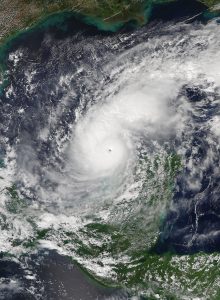 Insurance is an issue in Florida. As a commercial real estate broker, I run into it all the time. It is either decreasing net operating income for an investor or increasing association fees on an industrial condo for an owner user or something. Its effect is everywhere.
Insurance is an issue in Florida. As a commercial real estate broker, I run into it all the time. It is either decreasing net operating income for an investor or increasing association fees on an industrial condo for an owner user or something. Its effect is everywhere.
I’ve found owners can look at insurance as an expense, a requirement with no perceived benefit. I don’t view it this way, however. Instead, I view insurance as roughly the annualization of the calculated actuarial value of the risk. If a loss of $1,000,000 was expected every 20 years, this would be $50,000. This does not take into account investments earnings for an insurer, which should reduce this somewhat, or administrative costs and profits of an insurer, which of course increase this. It also doesn’t take into account government subsidies, which would suppress pricing. Regardless, the cost of the insurance is representative of the annualized actuarial risk as practically available in the market.
I find myself wondering about the large numbers of “self-insured” owners. A recent article, Damage from hurricanes Helene, Milton could top $200B, stated that “the total insured wind and flood losses are estimated at between $10.5 billion and $17.5 billion, according to CoreLogic.” Those considering the impact on insurance may be pleased to read this. Those worried about the economy, however, and particularly those absorbing those losses, may find this news less comforting.
If one assumes the high end of that covered losses range, it leaves $183 billion not covered. Thus, one could view this as a decrease in the asset side of the personal balance sheets of those affected. Much of that is surely in Florida. If one assumed 2/3, then the losses in Florida would be $122 billion, a sizeable 9.5% of Florida’s $1.28 trillion GDP. If so, what this means for Florida, particularly those affected areas, remains to be seen. I think any economist would tell you, however, that a 9.5% drop on a national basis would slam the country into a nasty recession.
I recall Andrew and its aftereffects. It was a different time. There was not the steady parade of major hurricanes we have today; the percent of hurricanes that are major storms has increased considerably since then. There was a hot minute in South Florida where the effect on the economy was expected to be very negative. Then, the insurance money started flowing it. Economically, it turned out to be a boost, which seems obvious now. Losses were largely covered by insurance, however. What seems different with Helene and Milton is that there will be little insurance money parachuting in to rescue people. Instead, property owners experienced these losses.
I see people on the news declaring they plan to rebuild and stay put. We’ll see. I instead expect that these storms will accelerate climate gentrification. Resale values in these areas will plummet such that any rebuild will be upside down versus the cost of construction. That may happen for some properties, but I suspect it will be far less that all. Any property in an area at risk really should only be developed to withstand such storms. Practically speaking, that will be multistory properties, as the cost to do this is prohibitive for most.
I believe it would be a good time for the state to pass a Live Local Act type bill for such at-risk locales, however defined, but with only the density benefits, not the development slowing requirements for affordability. This would increase supply, and more supply is the price suppressing side of the supply demand ratio. Plus, the Live Local Act has the affordable housing development stimulus well-covered.
Governor?
~
Dear Reader, This article is nothing more than the product of articles read, related thoughts, and simple arithmetic. Reader, if you see anything that seems incorrect in the above, contact me.
